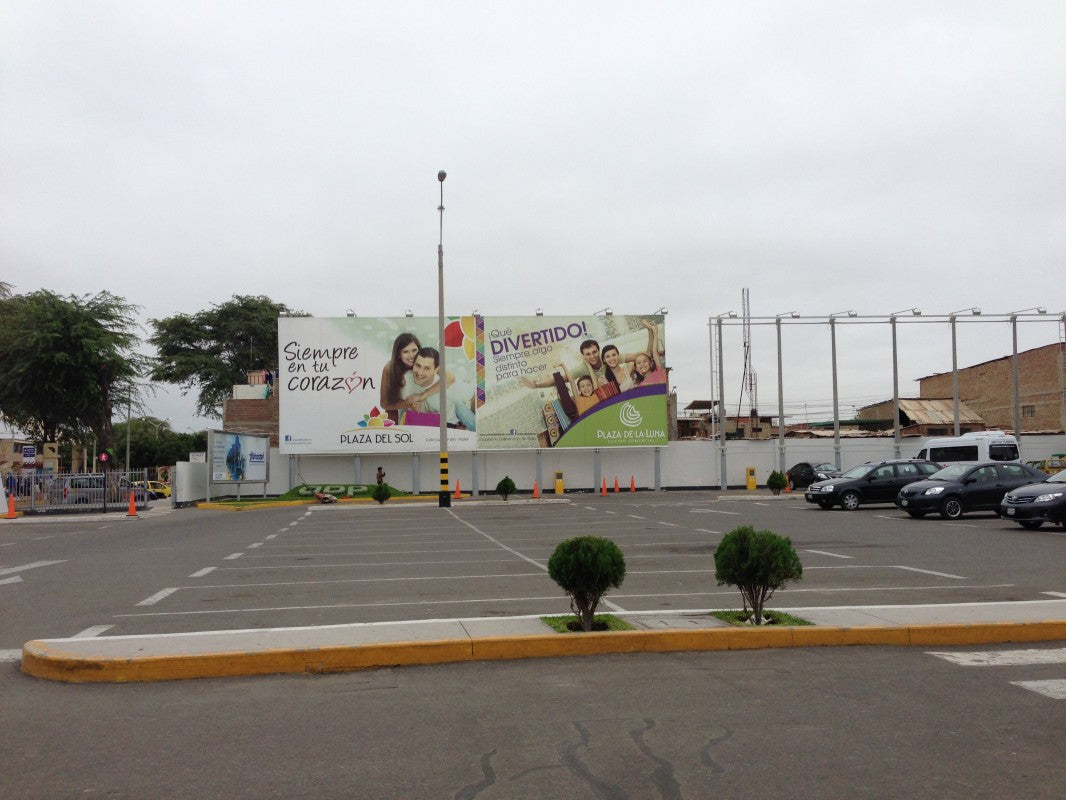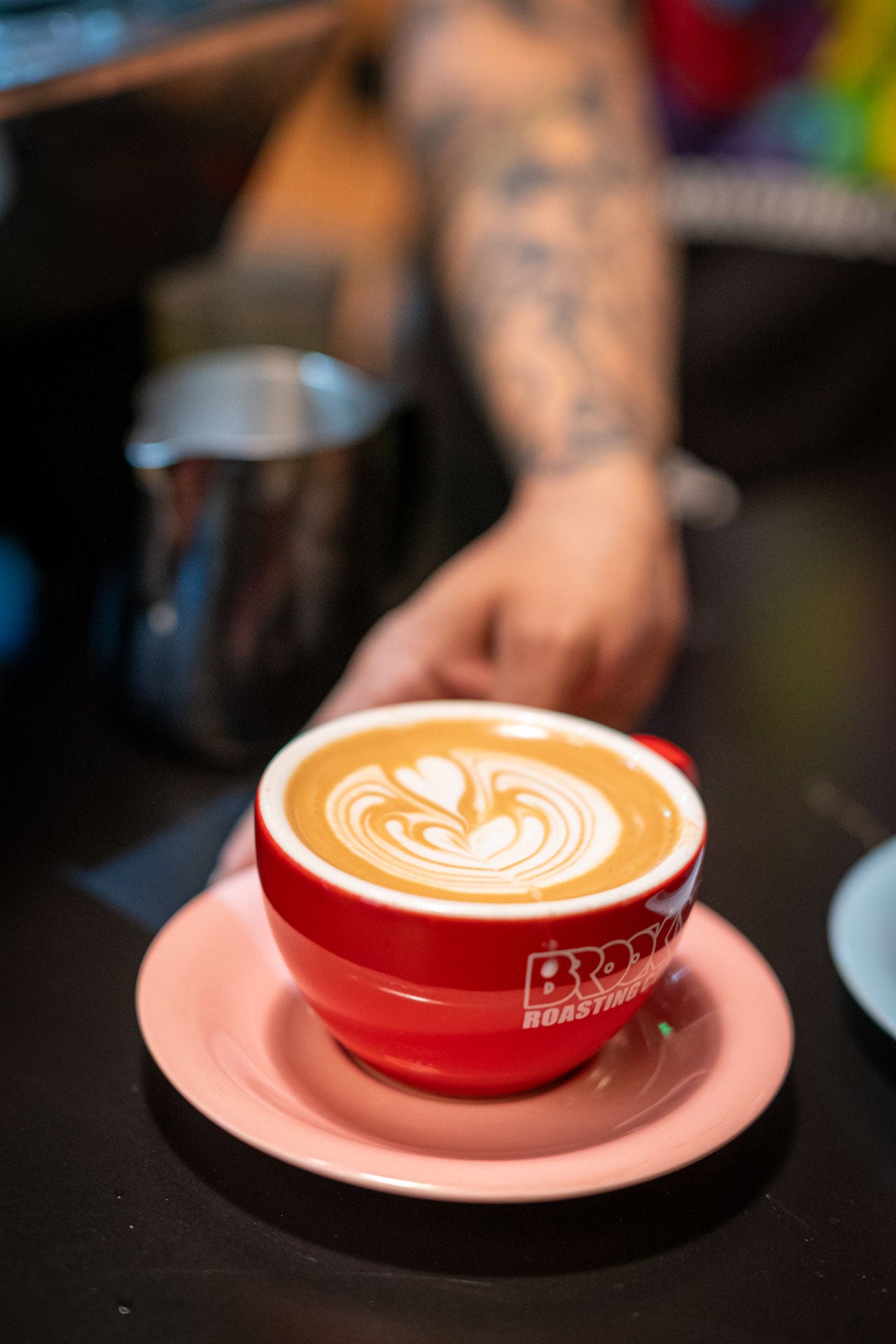
3 Days at Origin: BRC's Michael Pollack in Peru
While most of the nation was celebrating the 4th of July, Brooklyn Roasting Company's Michael Pollack was visiting the coffee farms of Peru, learning more about a cooperative named Sol&Café. If you were ever curious about the sights and sounds of coffee growing and production, check out the photos and videos he brought back from three days at origin:
 City of Piura, 8 am. Michael arrives at Piura Airport, where he his greeted by Javier Dominguez Arbildo, an official with Sol&Café. Founded in 2003, the cooperative is Fair Trade certified in both the US and in Europe, along with holding USDA Organic and Rainforest Alliance certified titles. Brooklyn Roasting Company has not previously bought any coffees from Sol&Café, but this trip could change all that….
City of Piura, 8 am. Michael arrives at Piura Airport, where he his greeted by Javier Dominguez Arbildo, an official with Sol&Café. Founded in 2003, the cooperative is Fair Trade certified in both the US and in Europe, along with holding USDA Organic and Rainforest Alliance certified titles. Brooklyn Roasting Company has not previously bought any coffees from Sol&Café, but this trip could change all that….
A visit to Cepicafe, a cooperative that processes coffee, chocolate, and sugar. Here, Michael shot some video of raw sugar production.
 Michael (center) with Cepicafe staff at the cupping table. These coffees have recently arrived at the Norandino facility, and are being tested for taints and defects. Norandino provides this service for coffees that come from a number of cooperatives, including Cenfro Café (BRC’s current Peruvian supplier) and Sol&Café.
Michael (center) with Cepicafe staff at the cupping table. These coffees have recently arrived at the Norandino facility, and are being tested for taints and defects. Norandino provides this service for coffees that come from a number of cooperatives, including Cenfro Café (BRC’s current Peruvian supplier) and Sol&Café.
 Coffee is warehoused here until it’s taken for shipping. Normally, the room is stacked full of bags, but there’s room now because it’s early in the coffee season. Peru’s harvest is picked in June, July and August – our summer, their winter.
Coffee is warehoused here until it’s taken for shipping. Normally, the room is stacked full of bags, but there’s room now because it’s early in the coffee season. Peru’s harvest is picked in June, July and August – our summer, their winter.
 Coffee being patio dried. Cooperative farmers are asked to dry their coffee before bringing it to the collecting station, but if they do not (or if the beans are not deemed dry enough), the additional trying takes place here.
Coffee being patio dried. Cooperative farmers are asked to dry their coffee before bringing it to the collecting station, but if they do not (or if the beans are not deemed dry enough), the additional trying takes place here.
 Green coffee beans.
Green coffee beans.
 A jute bag of beans being prepared for shipping.
A jute bag of beans being prepared for shipping.
 Stencils for the jute bags.
Stencils for the jute bags.
These coffees are being cupped at the end of the processing cycle, right before they’re bagged and put into shipping containers bound for North America and Europe. On the day Michael participated, there were four coffees being tested, with 15 cups per coffee (the tasters are checking to make sure the flavor stays exactly the same, cup after cup).



Michael and Javier get out of the processing plant and head for the country to visit some coffee farms.
 Javier (third from left) and other potential buyers meet with a Sol&Cafe farmer who owns six hectares (almost 15 acres) of land at an altitude of 5,900 feet.
Javier (third from left) and other potential buyers meet with a Sol&Cafe farmer who owns six hectares (almost 15 acres) of land at an altitude of 5,900 feet.
 Ripe and still-green coffee cherries still on the branches.
Ripe and still-green coffee cherries still on the branches.
 Coffee cherries close-up.
Coffee cherries close-up. A different Sol&Cafe farm at higher elevation. Surrounded by coffee cherries.
A different Sol&Cafe farm at higher elevation. Surrounded by coffee cherries.


Dramatic landscape seen from the farm.
 Michael and Javier with the farmers and their families.
Michael and Javier with the farmers and their families.
Freshly-picked coffee cherries going through the de-pulping machine,
which removes the fleshy skins from the coffee seeds (beans).
 Back at the processing station, a whiteboard explains how much payment farmers can expect for their coffee.
Back at the processing station, a whiteboard explains how much payment farmers can expect for their coffee. A local market in town.
A local market in town.


Peruvian landscapes.

